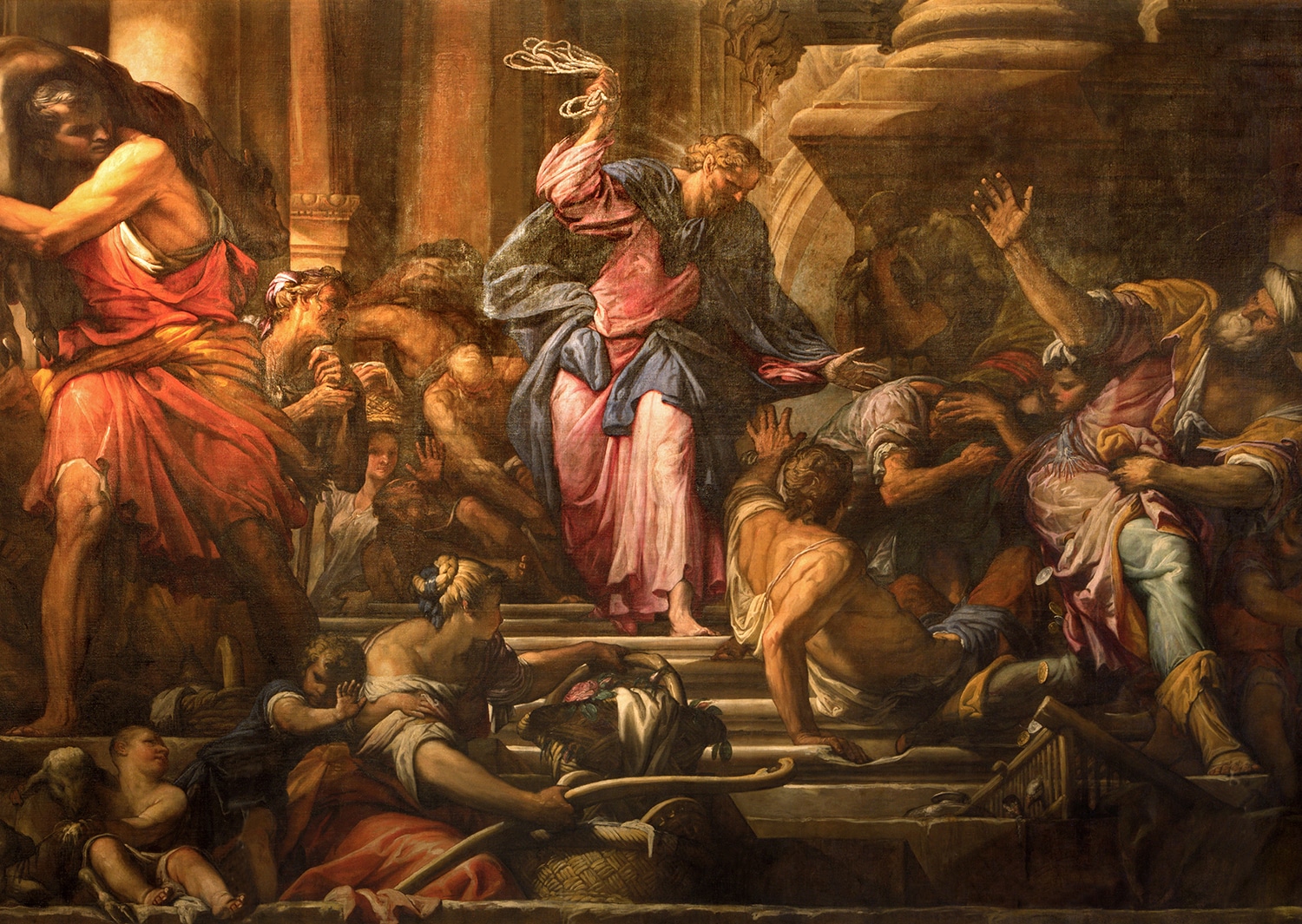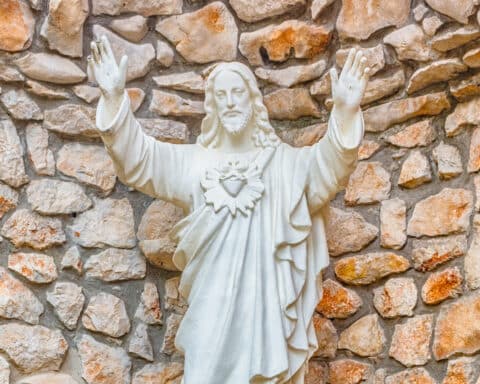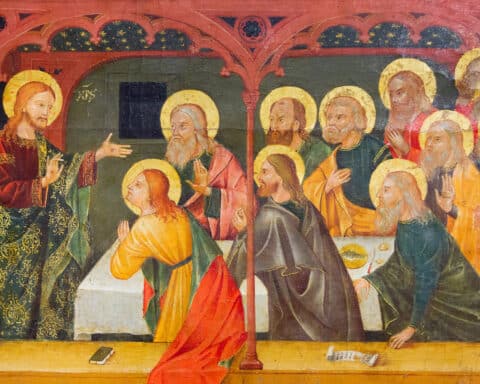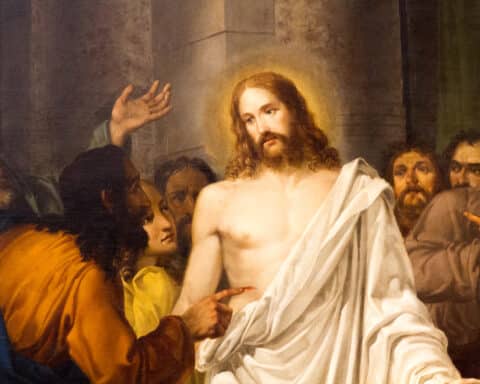John tells this story quite differently. Matthew, Mark and Luke place Jesus’ fracas, his cleansing of the Temple, at the end of his earthly ministry. John places it at the beginning. As you would assume, there has long been scholarly debate about this; and if you further assumed that not much has come of that debate, you’d be right.
Were there two incidents? Is John’s chronology more accurate? Or do the synoptic Gospels have it right, not John? Fortunately, these questions need not bother us. They will simply have to remain until that time when there will be no more questions. There is much mysteriousness in the Scripture like this. And it’s a beautiful thing too, and I wouldn’t wish it cleared up this side of heaven at all. For it keeps us disciples; we can’t help but be humble before the truth. Set aside then complications such as the kind that rightly occupy scholars and look simply at what John is trying to say in telling the story the way he does.
Jesus makes a whip of cords to drive out the money changers. Perhaps he’s bothered simply by the sight of commerce in the temple. Maybe he thinks people are cheating each other; not here, but in the other Gospels, Jesus calls the place a “den of thieves” (Mt 21:13; Mk 11:17; Lk 19:46). Maybe Jesus is angry about injustice. Or maybe John is making a more spiritual point, a prophetic point. Maybe John is reminding us of the end of Zechariah — “that day” when all will be consummated in Jerusalem. “No longer will there be merchants in the house of the LORD of hosts on that day” (Zec 14:21). Maybe John is telling us that this is more than an instance of activism, that it’s prophecy.
I think that’s closer to John’s meaning. Jesus calls it “my Father’s house.” Transcending whatever may be perfectly normal or corrupt about selling sacrificial animals and exchanging the monies necessary to do that, John’s more profound yet simpler point is that the Son of the Father has come into his temple. The messiah has come.
| March 3 – Third Sunday of Lent |
|---|
|
Ex 20:1-17 Ps 19:8, 9, 10, 11 1 Cor 1:22-25 Jn 2:13-25 |
But, as we see throughout John’s Gospel, prophetic fulfillment is not completely predictable. God doesn’t go exactly according to our reading of the script. “What sign can you show us for doing this?” Jesus is asked. Prophecy is fulfilled in an utterly surprising manner. Expectations are foiled; you’ll never guess what this messiah will do. “Destroy this temple and in three days I will raise it up.”
Taking the discussion deeper
Here we see Jesus do something he’ll do with Nicodemus and in Capernaum: He takes the discussion deeper, beyond the materially ordinary. Jesus gets symbolic and mystical. He’s talking in a way that will only be intelligible in the light of Easter. The disciples will only understand what Jesus is saying later, after the resurrection, that he’s talking about the temple that is his body. Only later will they understand that he was talking about the temple that would welcome us — his body, the Church, the temple in which we dwell in the Spirit.
And so, what are we to make of this? What does it mean for us? Well, if Jesus’ body is the temple, the Word in whom the Father’s glory dwells, and if that body is now also the Church, then the temple of the true God, the God of Israel, is not far from us (cf. Jn 1:14; Eph 1:22-23).
He is very close, as near as the nearest altar or as near as your nearest sisters and brothers in Christ. Not some random historical conflict, this event is a prophecy of our origin as the Church, the beginning of our inclusion into the people of Israel. This story invites us to see our Church, our parish or community differently. It reminds us to see ourselves spiritually — as one body, one resurrected temple of the body of Jesus.
One final note: don’t overlook the haunting end of this passage where John tells us that although “many began to believe in his name,” Jesus nonetheless “did not trust himself to them.”
One could more literally read that Jesus “did not believe their belief.” That is, they saw Jesus and were impressed, but the quality of their belief was itself not impressive. Haunting, as I said, and we don’t have time to explore it. At the very least, however, it underlines the spiritual depth that our belief in Jesus should have. If we’re going to understand anything Jesus says, our belief can’t be superficial. It must be real and spiritual. We must be able to understand with faith when Jesus talks about the temple and his body and his body and bread and so on. There is no room for half-belief. Jesus should believe our belief. This is why Lent is such a merciful thing. It allows us to strengthen belief.





